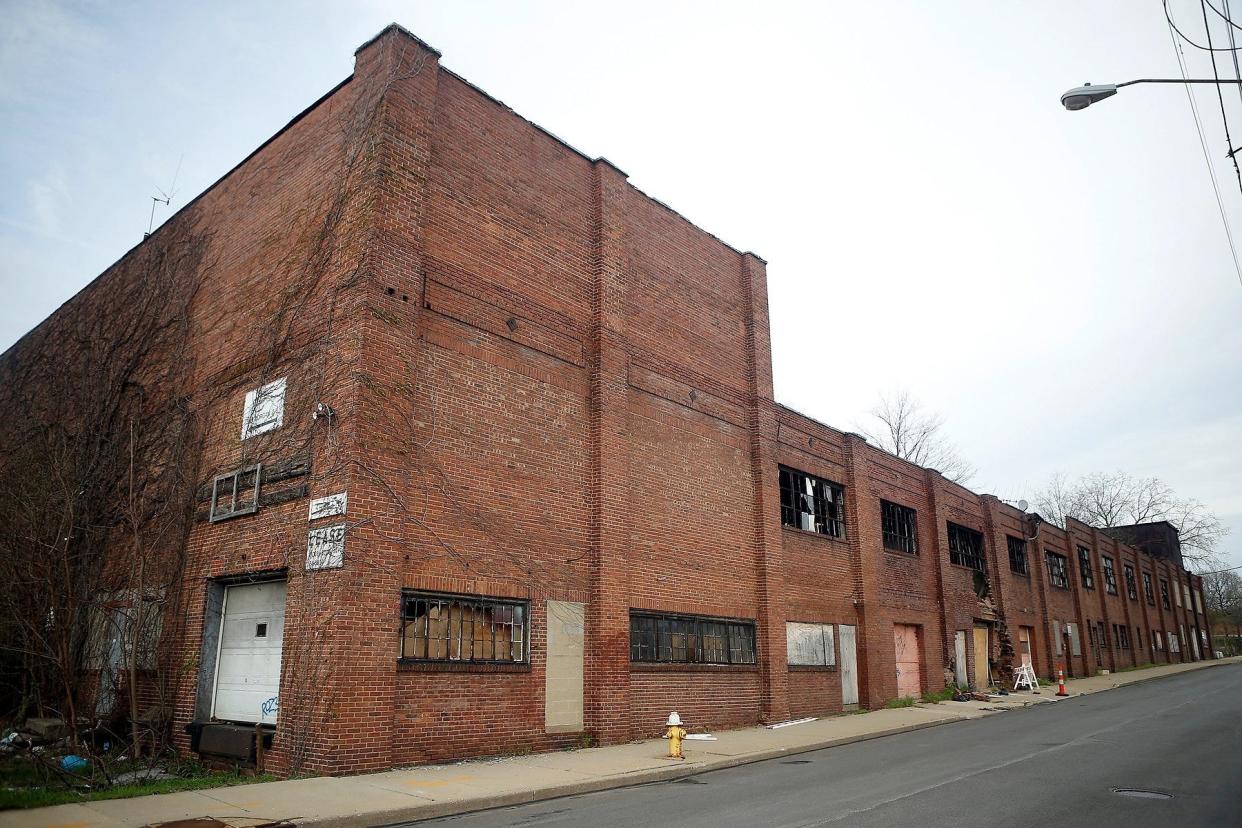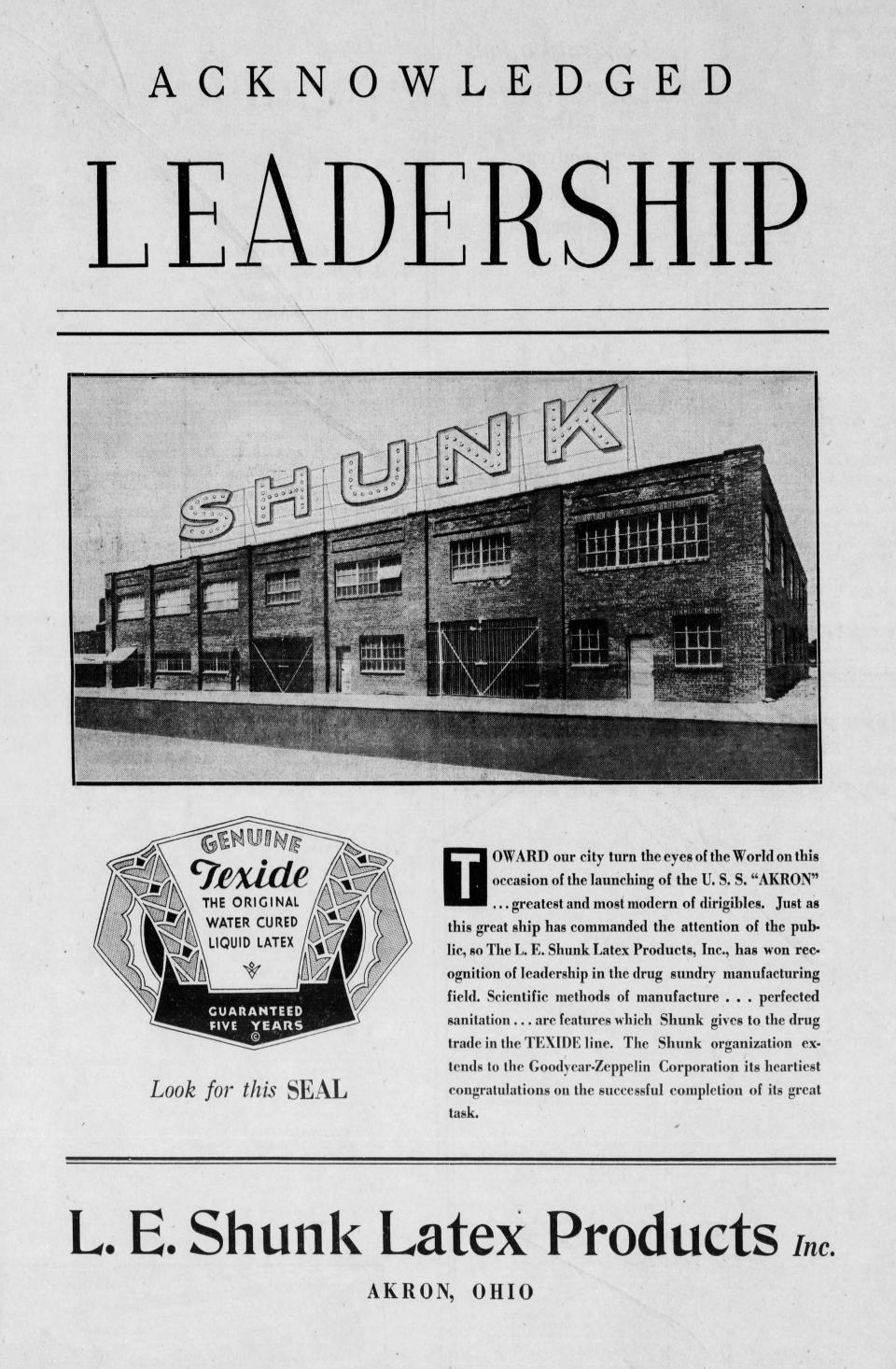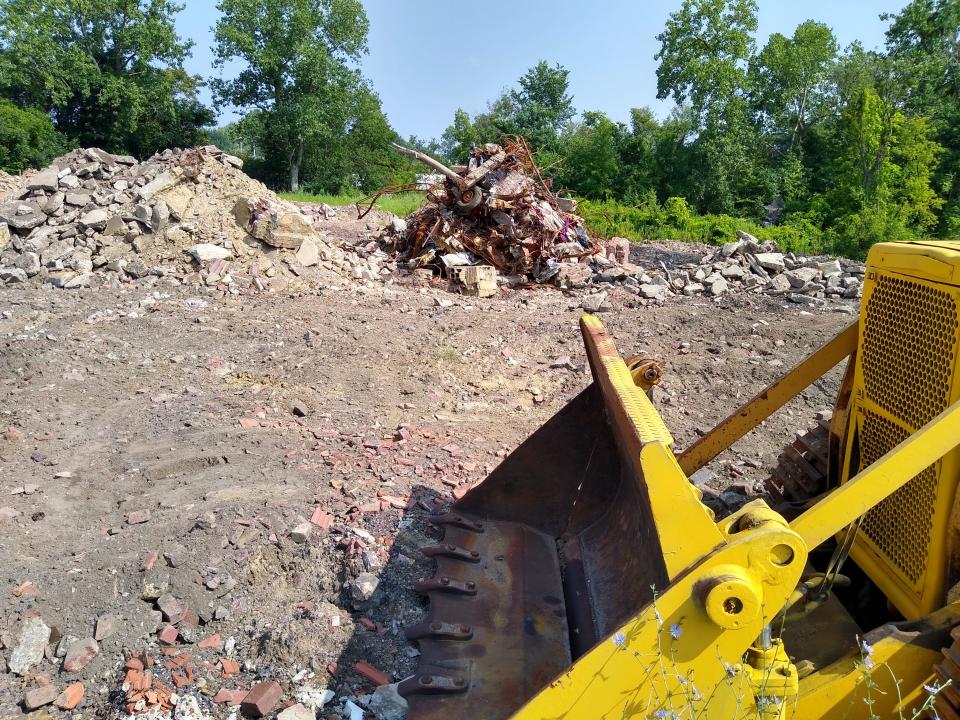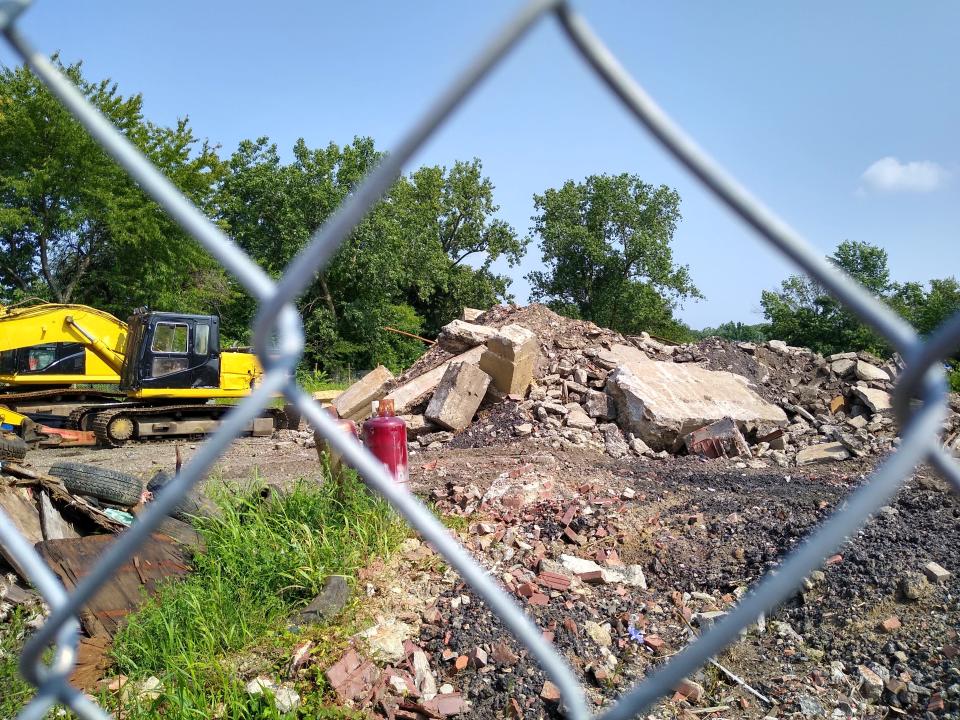Local history: Demolished Akron factory has a secret past

On the edge of the park, behind a chain-link fence and a thicket of trees, lies the rubble of a derelict building with an adult past.
This month, Akron officials celebrated the opening of a new playground at Morgan Park in South Akron. Children provided input on improving the Morgan Avenue site, which had fallen into disrepair over the years.
Future plans call for resurfacing basketball courts, building a pavilion, upgrading a path, adding benches and landscaping the recreation area.
By then, there should be nothing left of the former L.E. Shunk Latex Products, the adjacent red-brick complex that the city demolished after former owners neglected the property for decades.
A bustling business nearly a century ago, the factory specialized in “dipped rubber,” “molded goods” and “druggists’ sundries,” the generic descriptions for products whose function could only be whispered in polite society.
Shunk manufactured prophylactics. The company gave new meaning to Akron’s nickname as “The Rubber Capital of the World.”

Akron painter had side business
Louis Earl Shunk, the son of John and Hattie Shunk, was born in 1884 and grew up in Akron. He trained to be a painter like his father, but somewhere along the way, he took up a side business.
In 1913, Summit County deputies, acting on a tip from a Chicago druggist, raided Shunk’s unassuming-looking paint shop at Chittenden Street and First Avenue in Middlebury. Authorities arrested Shunk after finding 10 women and two men manufacturing “contraband rubber goods.”
“Immediately a wild scene ensued, one of the girls fainting and a half dozen of the others beginning to cry and sob and beg for Shunk’s release,” the Beacon Journal reported. “Twenty thousand of the illicit articles were confiscated.”
Illinois investigators participated in the raid, proclaiming that 80% of Chicago’s “illicit rubber goods” had been manufactured in Akron. Federal law prohibited the interstate distribution of contraceptives.
Shunk, 28, testified in Summit County Common Pleas Court that he didn’t know there was a law against such goods. He paid a $50 fine (about $1,500 today) and pledged to give up the business.
The rules eased after a 1918 court decision allowed doctors to prescribe condoms to prevent the spread of disease. Manufacturers could sell prophylactics in drugstores.
Factory on Morgan Avenue
Shunk went back to work, operating a small plant in Barberton before opening L.E. Shunk Latex Products in 1930 at 355 Morgan Ave. Akron inventor John Gammeter designed the factory’s machinery.
Touting its “scientific methods of manufacture” and “perfected sanitation,” the company sold its products under various brand names, including Sultan, Monogram, Texide, Silvertex and Tetratex.

While the country was mired in the Great Depression, business boomed at Shunk Latex. Barrels of latex arrived by train each day.
“We’ve worked full time and double shifts practically all year,” L.E. Shunk told the Beacon Journal in October 1931. “And we’re at work now on a building that doubles our capacity.”
The L.W. Camp Co. constructed three additions for Shunk in a project that cost $45,000 (about $892,000 today). The brick, U-shaped complex looked like one continuous building from Morgan Avenue.
Apparently, not everyone was happy with the company’s line of business.
Shunk decided to barricade his office and equip his car with bulletproof glass after a gunman fired into the building in 1933. Someone dynamited his home on North Portage Path in 1935, shattering 36 windows.
The company employed 100, including 75 women. In 1936, Shunk Latex shut down for 13 weeks to install an automatic conveyor system. When the factory reopened, 38 workers were laid off.
Angry union members went on strike. The picket line, mostly women, held clubs and glared at anyone who neared the gates. Shunk relented and rehired the 38 laborers on a “share-the-work basis.”
All was forgiven by December when the boss gave his staff a half-month’s pay as a holiday bonus and the employees presented him with a basket of 52 roses for his 52nd birthday.
In 1939, Shunk Latex merged with its chief rival, Killian Manufacturing Co., and Earl Shunk retired to Florida, where he died in 1964 at age 79.
Latex company supplied troops
While U.S. rubber products were restricted during World War II, the Morgan Avenue plant supplied condoms for U.S. troops. The military encouraged the use of prophylactics, printing posters with such slogans as “Stamp Out Venereal Diseases,” “Protect Yourself!” and “There’s No Medicine for Regret.”
Production continued for two more decades on Morgan.
In 1946, the National Hygienic Products Corp. of New York bought Shunk, Killian and their Killashun sales division. In 1955, the business became a unit of Akwell Corp. In 1969, shareholders agreed to dissolve the latex manufacturer “and completely wind up its affairs.”
The industrial complex served many uses over the decades, including a warehouse, craft business, machine shop, furniture showroom, plumbing service, used computer store, supply business and window company.

The old building was vacant by the 21st century. The owner, a national company, owed $200,000 in back taxes. Vandals, squatters and stray cats roamed the corridors. Shattered glass and garbage littered the floors. Heavy fires caused major damage.
Mercifully, demolition crews began to tear down the complex last year following asbestos evaluation and remediation, and the work is ongoing. Heavy machinery remains at the fenced-off site, a landscape of smashed bricks, broken rubble and twisted metal.
The kids at Morgan Park’s new playground won’t know what stood on the adjacent property.
But the Smithsonian Institution is aware.
Among the vast archives of the National Museum of American History in Washington, D.C, is a 1940s box of 12 Tetratex prophylactics manufactured by L.E. Shunk Latex Products.
Proudly printed on each one: “Akron, Ohio, U.S.A.”
Mark J. Price can be reached at mprice@thebeaconjournal.com
This article originally appeared on Akron Beacon Journal: Demolished Akron factory has a secret past

